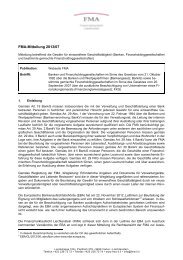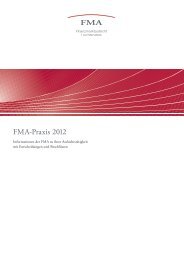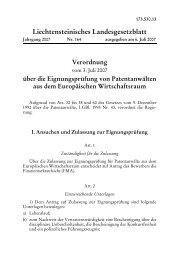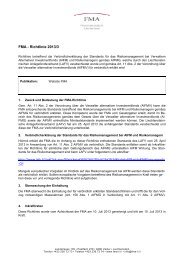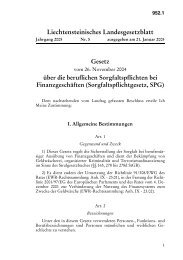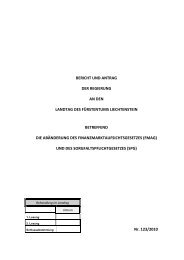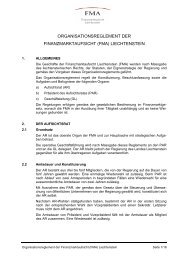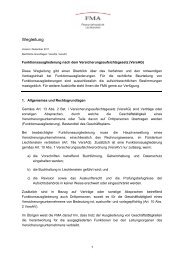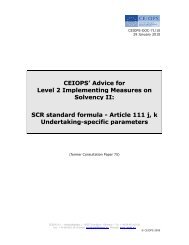CEIOPS' Advice for Level 2 Implementing ... - EIOPA - Europa
CEIOPS' Advice for Level 2 Implementing ... - EIOPA - Europa
CEIOPS' Advice for Level 2 Implementing ... - EIOPA - Europa
You also want an ePaper? Increase the reach of your titles
YUMPU automatically turns print PDFs into web optimized ePapers that Google loves.
CEIOPS’ <strong>Advice</strong><br />
A.- Role of proportionality in the valuation of technical<br />
provisions<br />
3.88 The principle of proportionality is intended to support the consistent<br />
application of the principles-based solvency requirements to all<br />
(re)insurance undertakings.<br />
3.89 The undertaking is responsible to determine the technical provisions<br />
by using an appropriate method selecting from the continuum of<br />
methods available, taking into account nature, scale and complexity<br />
of the risks.<br />
3.90 In this context, “risks” should include all risks which materially affect<br />
(directly or indirectly) the amount or timing of cash flows required to<br />
settle the insurance and reinsurance obligations arising from the<br />
insurance contracts in the portfolio to be valued.<br />
3.91 The undertaking should be able to explain what methods are used<br />
and why the specific methods are selected.<br />
A.1.- Process of assessment of proportionality<br />
3.92 In assessing whether a valuation method could be considered<br />
proportionate to the underlying risks, the (re)insurance undertaking<br />
should have regard to the following steps:<br />
Step 1: Assessment of nature, scale and complexity<br />
3.93 The undertaking should assess the nature, scale and complexity of<br />
the risks underlying the insurance obligations. This is intended to<br />
provide a basis <strong>for</strong> checking the appropriateness of specific valuation<br />
methods carried out in the subsequent step and shall serve as a<br />
guide to identify where simplified methods are likely to be<br />
appropriate.<br />
Assessment of nature and complexity:<br />
3.94 Nature and complexity of risks are closely related, and <strong>for</strong> the<br />
purposes of an assessment of proportionality could best be<br />
characterised together. Indeed, complexity could be seen as an<br />
integral part of the nature of risks, which is a broader concept. 45<br />
3.95 In mathematical terms, the nature of the risks underlying the<br />
insurance contracts could be described by the probability distribution<br />
of the future cash flows arising from the contracts. This encompasses<br />
the following characteristics:<br />
• the degree of homogeneity of the risks;<br />
• the variety of different sub-risks or risk components of which the<br />
risk is comprised;<br />
• the way in which these sub-risks are interrelated with one<br />
another;<br />
45 I.e. whether or not a risk is complex can be seen as a property of the risk which is part of its nature.<br />
24/112<br />
© CEIOPS 2010




